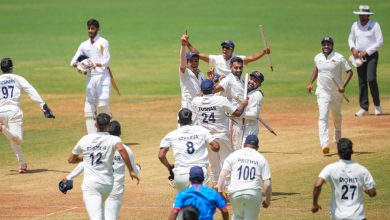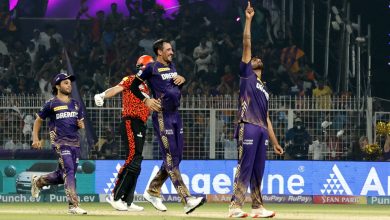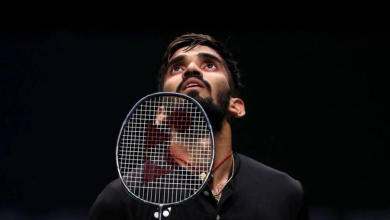EPL title race: The tactics of Liverpool’s Klopp and Manchester City’s Guardiola

The tactics and philosophies of Jurgen Klopp and Pep Guardiola are similar yet dissimilar. Both employ false nines, but their functions are different. Both are wedded to the 4-3-3 formations, yet operate differently. Both rely on passing and pressing, but at various levels. It is this strand of tactical paradoxes that make them even more engrossing to behold, adding another layer to the narrative of the two great rivals.
Liverpool’s manager Jurgen Klopp. (AP Photo/Ian Walton)
False Nines: Guardiola, who shaped the greatest false nine in hory, Lionel Messi, had been using a more conventional 9 in his early City years, chiefly because.of Sergio Aguero. But after the Argentine poacher got injured last year, and departed to Barcelona, Guardiola has reverted to his favourite position with alacrity, the ploy transforming from Plan B to A. He has used a raft of forwards in this position, including Gabriel Jesus, who began as a conventional striker, as well as Ilkay Gundagon, a deep-lying midfielder.
Klopp too does not possess an out and out striker. But his false nine is more false nine and a half, whose chief task is to create space and pull defenders out of their position so that the more expansive wingers, Mo Salah and Sadio Mane could prosper. Brazilian forward Roberto Firmino has made the role his own, selflessly but resolutely. Recently, though, after Liverpool acquired Diogo Jota, Klopp has resorted to a more conventional False Nine. So has Sadio Mane a few times after the arrival of left-sided forward Luis Diaz.
Same formation, different approach: Both managers tune their teams to a 4-3-3 formation. But both operate differently. Liverpool is winger-centric. When attacking they become 4-1-5, with full backs joining the forward in a relentless wave of creative assault from the wings, while two of the midfielders dropping to shore up the back-line. City typically operate through central channels, and when they are in possession, their full-backs push so high up that the formation virtually becomes a 2-3-5. Whereas Liverpool’s forward-line are conscious of not over-crowding upfront, their City counterparts shuttle in and out from their designated spots, sometimes operating so narrowly that it creates an impression that they are over-crowded. But their passing range is so expansive and deft that they could navigate through even the tightest of spaces. Such a formation isolates the centre-backs, and with their midfield pair roving between the lines, there would be gaps in the midfield, making them vulnerable to quick counters. But the gaps are filled City’s resourceful fullbacks, who counter-presses vigorously when they lose the ball. So essentially, City’s defensive midfielders join the attack when they have possession, but Liverpool’s drop back to bolster the defence. From his midfield, Guardiola wants neat interplay whereas Klopp wants energy.
The City manager uses his midfielders to combine with the wingers to create goals while Klopp’s midfielders offer protection and power, scoring ever so rarely.
Manchester City’s head coach Pep Guardiola. (AP Photo/Kirsty Wigglesworth)
Flying full-backs with different roles: Liverpool’s full-backs, Andy Robertson and Trent-Alexander Arnold are often called playmakers from the wings. They hatch chances, conceptualise goals, belt goals and are dead- ball virtuous. They have the license to go full-throttle, and often linger on after feeding the ball to the forwards. City’s fullbacks are inverted full-backs (a tactic he learned from German football) who instead of overlapping, merges with the midfield. So while Robertson and Arnold are more like wingers, Joao Cancelo and Kyle Walker could pass off as attacking midfielders, with a slick passing range. The concept is clear—more bodies in the midfield, to not only help in possession but also provide another defensive layer and enable the central midfielders to advance upfront to find pockets of space.







